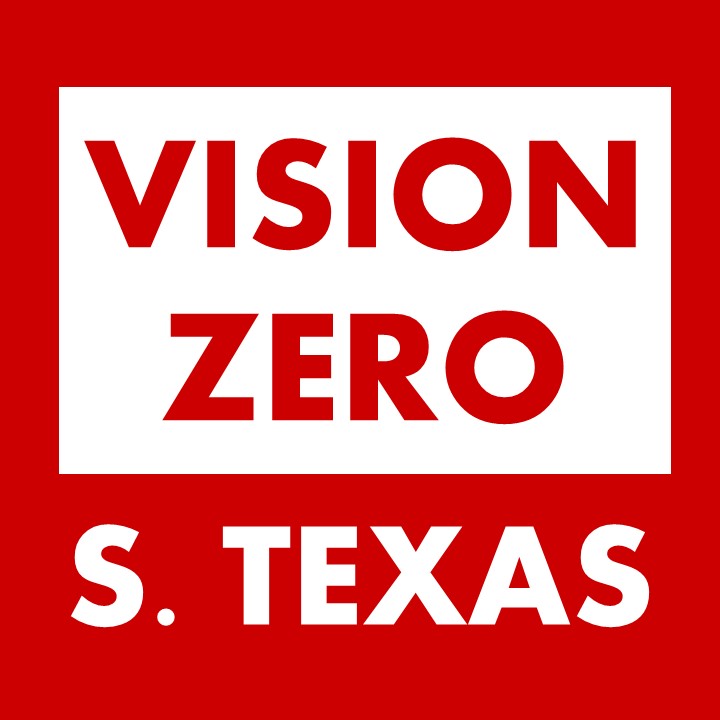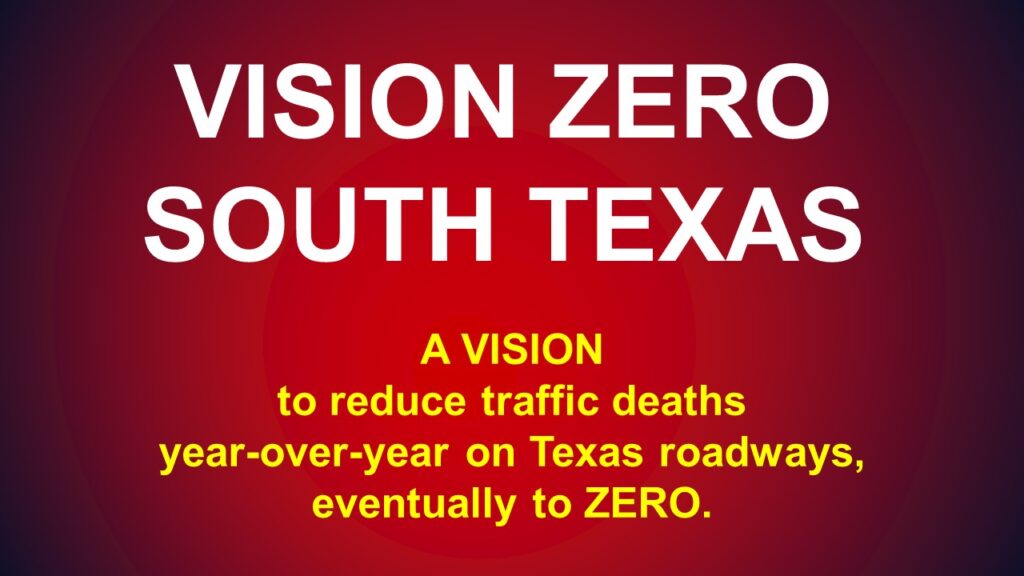
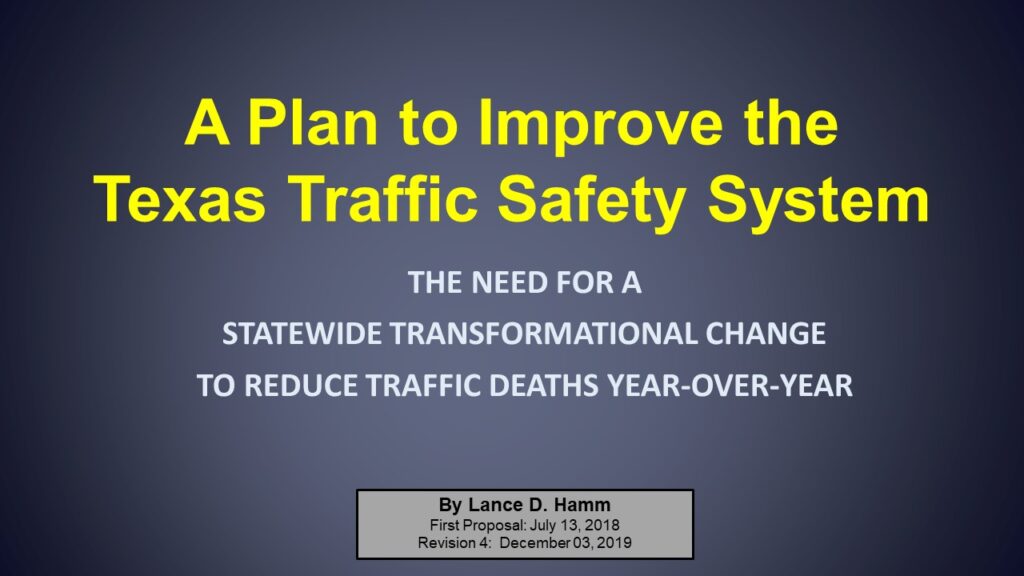
The Mission
The primary mission of Vision Zero South Texas, as a grassroots advocacy movement, is to promote positive change to the Texas traffic system to reduce traffic deaths, year-over-year. To achieve this goal, Mr. James Bass, former Executive Director of TxDOT, was first introduced to Lance Hamm’s presentation, “A Plan to Improve the Texas Traffic Safety System,” in July of 2018. With constructive criticism and common sense recommendations for improvement, this PLAN targeted three organizations for change; the Texas Department of Transportation (TxDOT), the Texas Transportation Commission, and the Texas Legislature (TxLege).
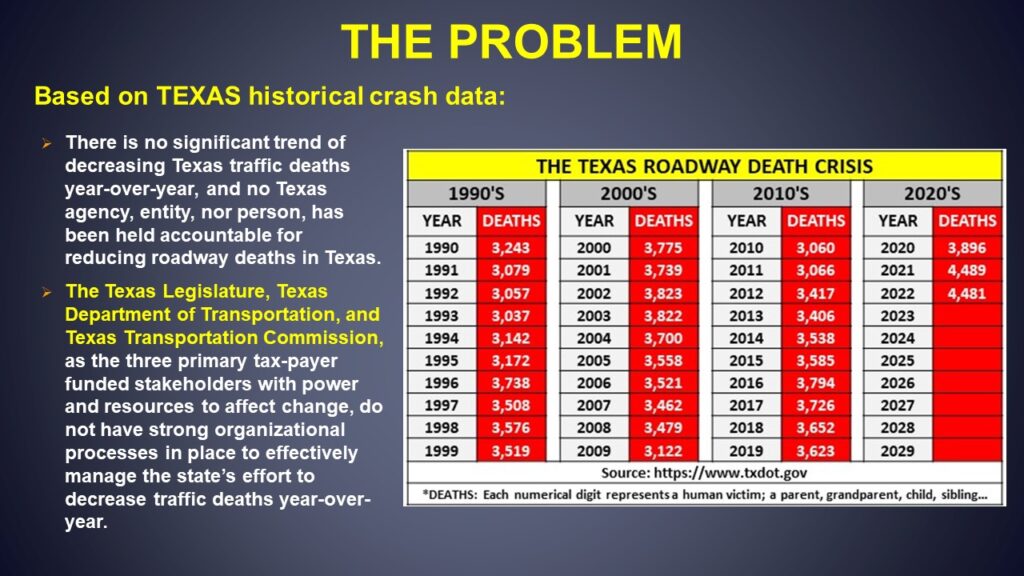
The Problem
In 2022, there were 4,481 deaths on Texas roadways. For Texas families, that is a tragic and preventable problem. That is, to be forced to endure an unsuspecting roadway death lottery of twelve (12) deaths every day on Texas roadways (on average). To effectively create change to solve a problem, the problem must be fully understood. THE TEXAS TRAFFIC SAFETY PROBLEM: Based on historical crash data, there is no significant trend of decreasing Texas traffic deaths year-over-year, and no Texas agency, entity, nor person has been held accountable for reducing roadway deaths in Texas.
TxDOT, the Texas Transportation Commission, and the Texas Legislature (as the three primary stakeholders with power and resources to affect change) do not have strong organizational processes in place to effectively manage the state’s effort to decrease traffic fatalities year-over-year, primarily because neither entity has identified the ROADWAY DEATH PROBLEM as a crisis and identified the agency, entity, nor person to be held accountable for solving the problem.
Please navigate to the next page on this website, The Problem, to get a full explanation and specific examples of policies and practices that are continuing to enable the problem.
The Paradigm Shift
Graphic Source: VisionZeroNetwork.org
The Vision Zero South Texas website will attempt to educate all traffic safety stakeholders on the paradigm shift of using Vision Zero principles to affect change that results in fewer traffic deaths and serious injuries.
Human drivers and other road-users make mistakes that may lead to crashes. That is a fact and no amount of education and/or driving or life experience is going to prevent human mistakes entirely. Knowing that drivers and other road-users are going to make mistakes, Vision Zero advocates want to ensure those mistakes, and subsequent crashes, do not lead to deaths or serious injuries. To do this, Vision Zero advocates desire to shift the primary focal point of mitigation efforts (to prevent crashes from becoming deadly) away from road-users (INDIVIDUAL Approach) and more toward the policies and systems of roadway designers and lawmakers (SYSTEMS Approach). Traffic crashes are inevitable because human error is inevitable, but the system (speed limits, proximity of opposite-direction traffic or traffic to pedestrians/bicyclists, the distance of fixed-objects to the roadway, etc.) can prevent vehicle crashes from becoming deadly.

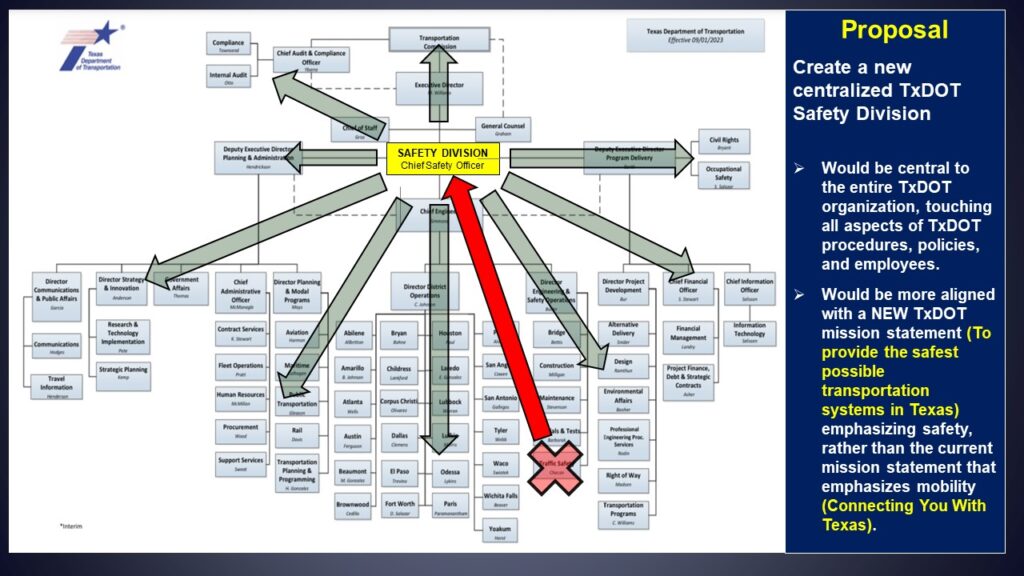
The Solution
As a major critic of TxDOT’s and TxLege’s traffic safety policies and practices, it is very important that Vision Zero South Texas promotes common sense solutions to reduce Texas traffic deaths year-over-year. This website will promote in-house traffic safety recommendations from Vision Zero South Texas AND recommendations by Vision Zero Texas, the National Transportation Safety Board (NTSB) and other external advocacy groups, all in an effort to reduce Texas traffic deaths and serious injuries, year-over-year.
Please navigate to The Solution/Agenda page of this website to fully understand our recommendations to reduce Texas traffic deaths year-over-year.
Please, read the letter, “A Call For Action” (https://visionzerosouthtexas.com/a-call-for-action/) and explore this website to fully understand the need for a Texas statewide transformational change to reduce traffic deaths year-over-year.
Vision Zero Core Principles
- Traffic deaths and severe injuries in crashes are preventable and unacceptable.
- Human life takes priority over mobility and other objectives of the traffic system.
- Human error is inevitable. Human mistakes, in general, are unpredictable, but quite often during certain types of vehicle crashes, human error is predictable and recurring (e.g., centerline-crossing head-on crashes, at-grade intersection t-bone crashes, one-vehicle off-the-road crashes into roadside fixed objects).
- The human body is inherently vulnerable and vehicle speed at crash-impact is the fundamental predictor of seat belt effectiveness and crash survivability.
- Safe roadway design, safe road-user behaviors, education, safe/thorough enforcement, and safe/efficient emergency response are essential contributors to a safe traffic system.
- Policies at all levels of government and roadway management need to align with making safety the highest priority for roadways.
